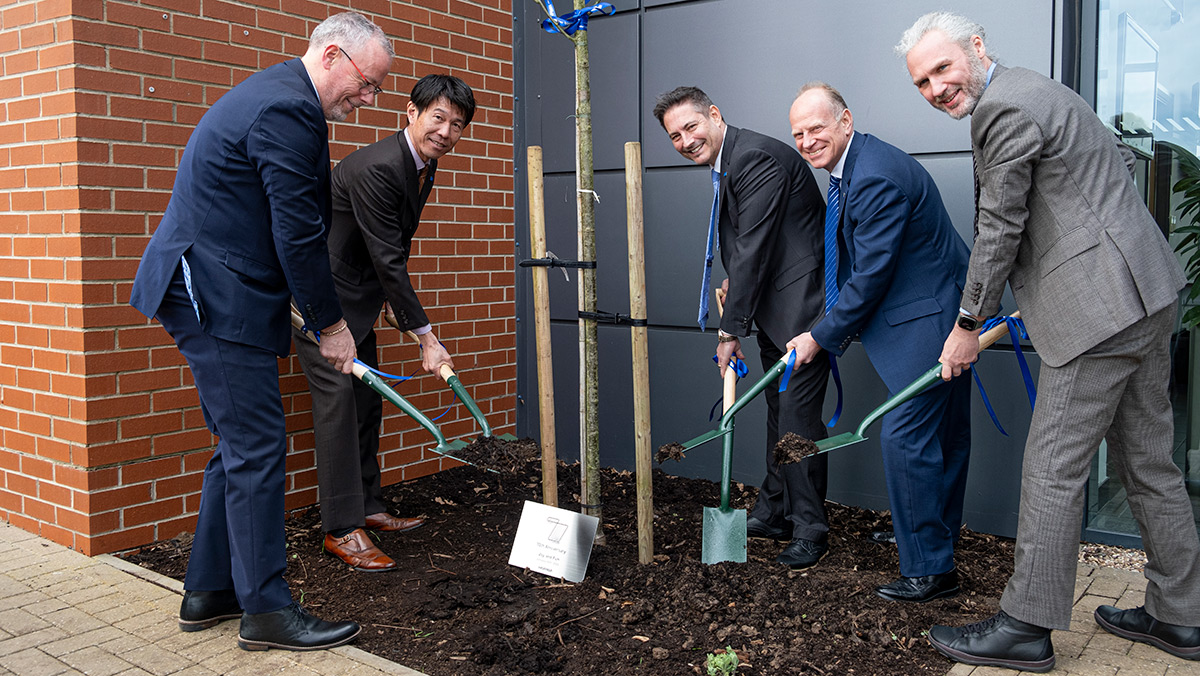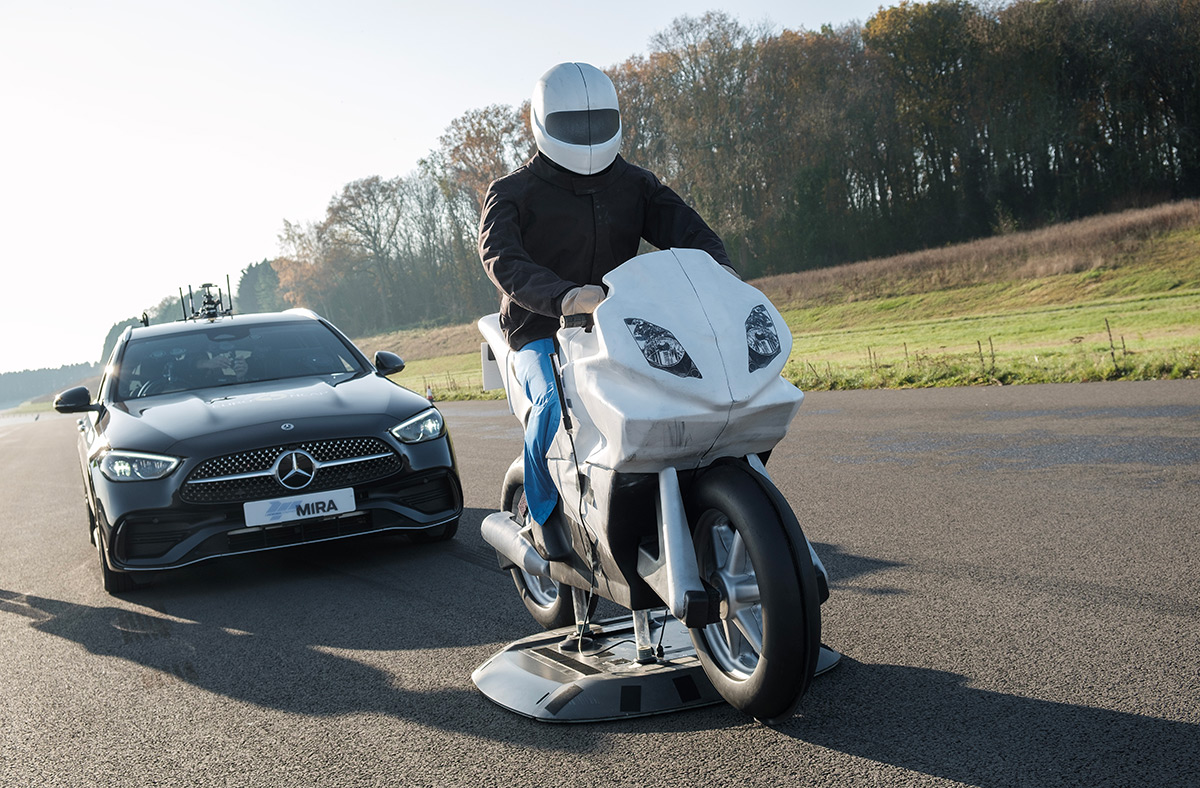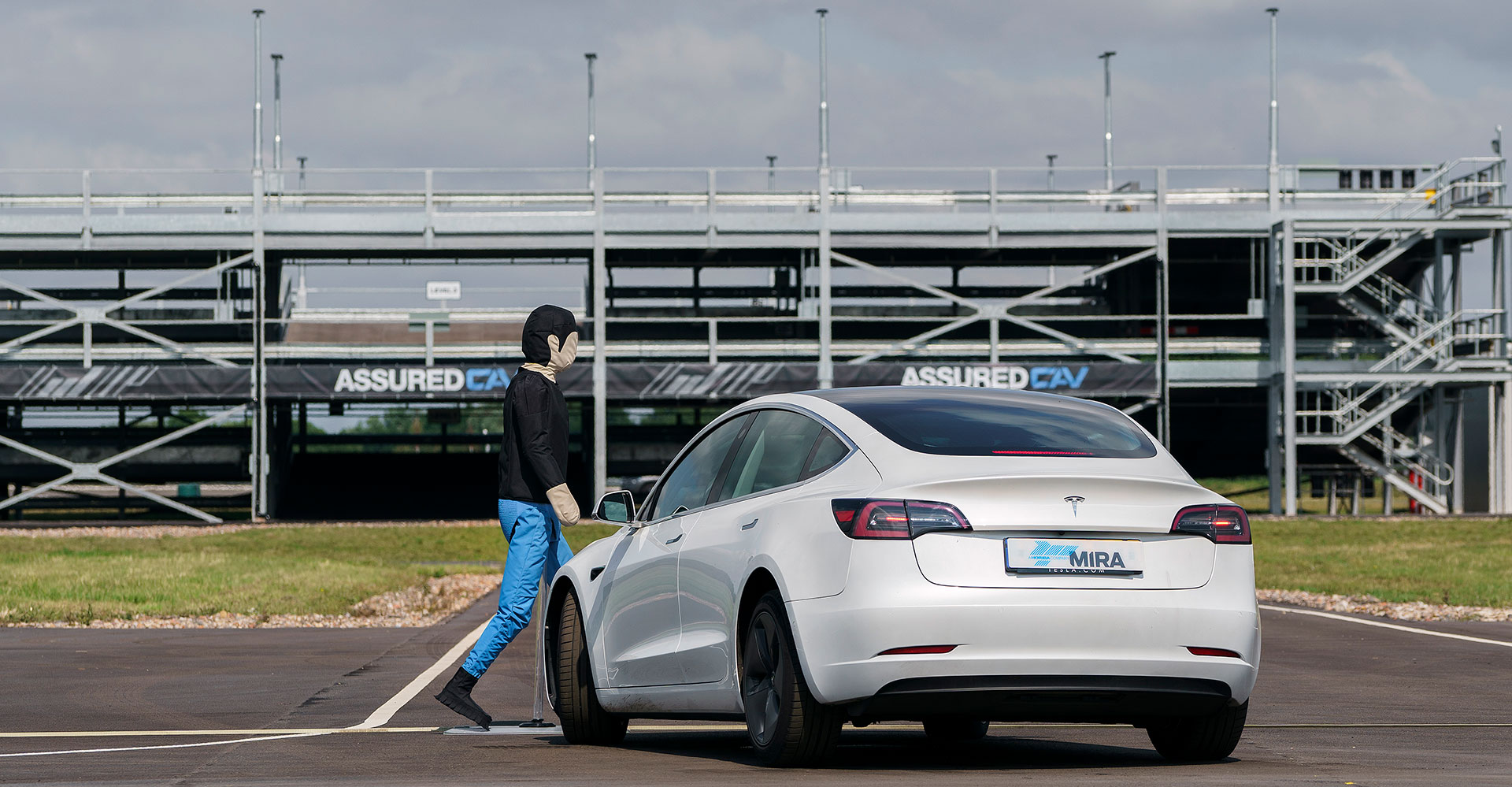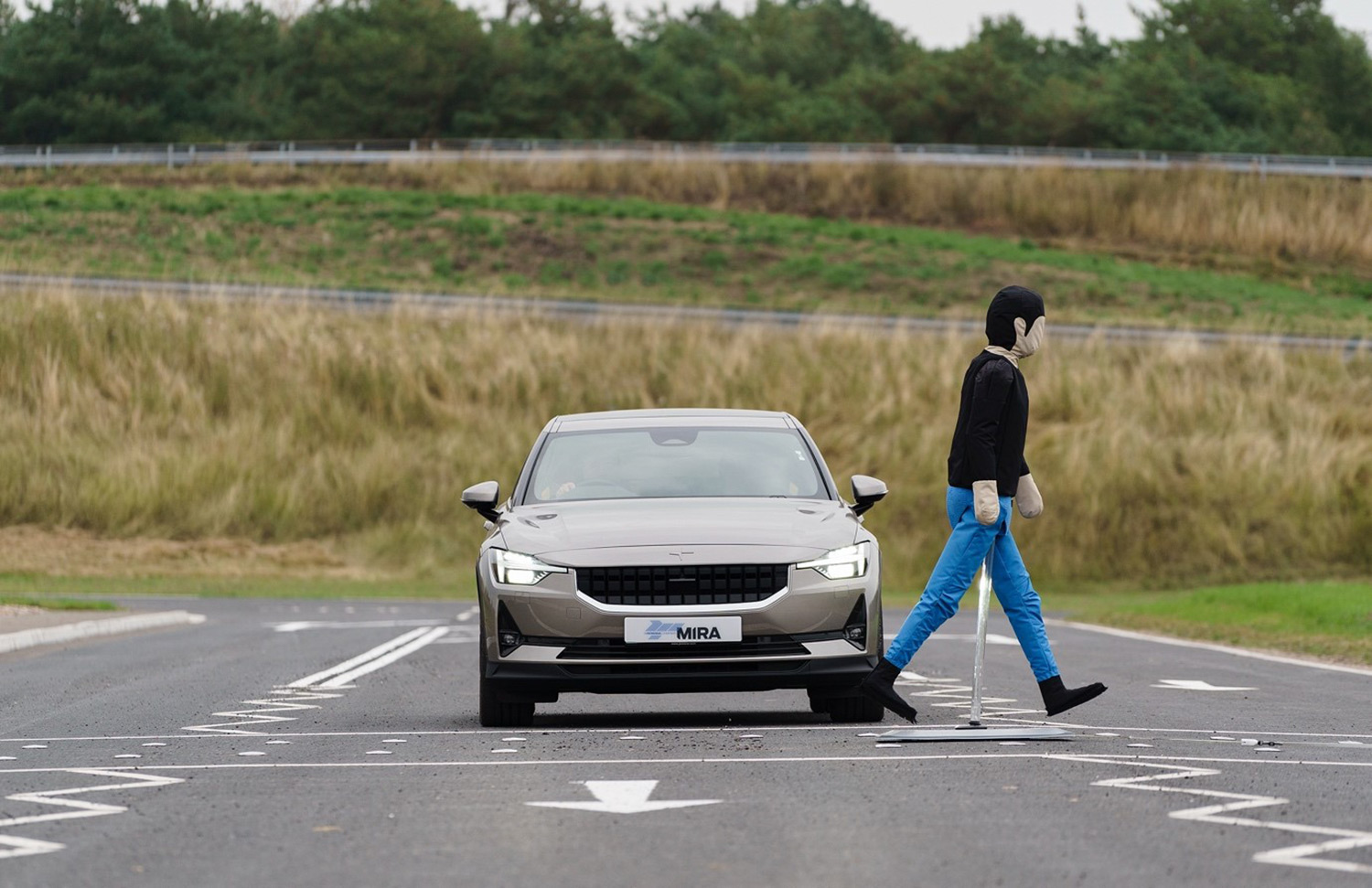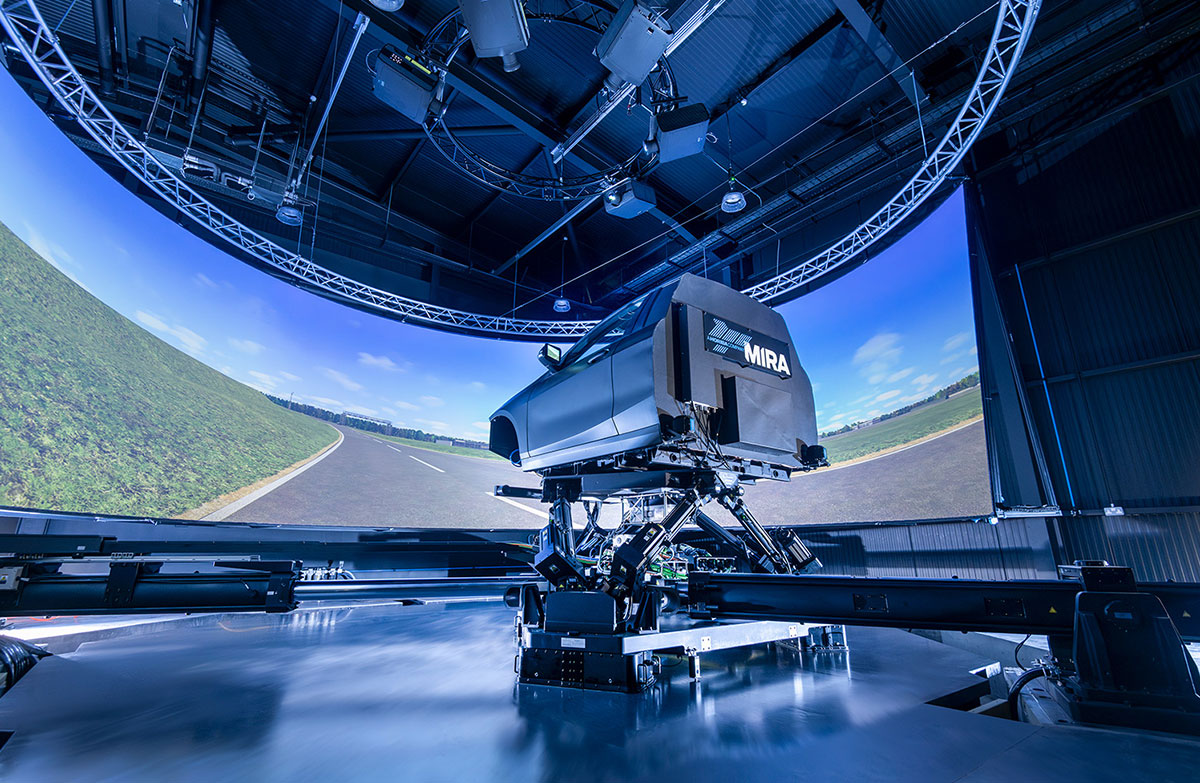Adding the ‘Human Touch’ to CAV Development
Despite recent successes in landmark trials of connected and autonomous vehicles (CAVs), putting pioneering driverless technology on Britain’s roads is still dependent on getting such vehicles to behave and react to complex scenarios in a human-like manner. Here, Richard Hillman, Principal CAV Engineer at HORIBA MIRA, examines how industry and government collaboration on projects such as HumanDrive is making great strides in adding the ‘human touch’ to CAVs.

For some time now, the movement towards connected and autonomous vehicles (CAVs) has been heralded as the future of mass transport.
Forming an integral part of a future mobility vision designed to tackle increased mobility demands, while negating the associated negative environmental and social impacts, recent years have seen CAVs gain wide-reaching support from many leading economies around the world.
While new details may emerge in a post-coronavirus world, only last year the UK government declared its ambitions to be the frontrunner in the commercialisation of CAVs, whereby it aims to have connected vehicles on roads without any human oversight by 20211. More so, in the same year the German car industry committed to investing €60bn over the next three years in electric and self-driving cars2, while Dubai by recently launched the Dubai Autonomous Transportation Strategy with a view that 25% of all transportation trips in Dubai will be smart and driverless by 2030.3
Such ambitions have been followed by an influx of landmark CAV trials across the UK and globally. Last October, for example, saw the first demonstration of an autonomous fleet driving in a “complex urban environment” in London4, shortly followed by the completion of the first test case of using driverless cars to carry human passengers on Britain’s roads.5 At the same time, many other nations around the world continue to plough huge investment in further ground-breaking trials as part of their own ambitious CAV targets.
On the automotive manufacturing front this is being met with a gradual increased use of autonomous features such as automated parking, automatic lane keeping and adaptive cruise control; effectively transitioning consumers towards an autonomous future.
However, while recent years have certainly seen the industry make huge strides in the movement towards the new age of clean, efficient transport afforded by CAV adoption, the reality is that there remains a considerable journey ahead until we achieve mass deployment.
The Journey Ahead
One huge research and development area lies in tackling the fundamental challenge of getting self-driving vehicles to effectively behave and perform like a human.
Inherently, this is an incredibly complex task given that any one car journey can throw up an infinite number of scenarios, to which the ‘human’ has to react. For example, on an average commute to work; a driver may face something as simple as a pedestrian crossing, or car driving too closely behind, through to a more complex scenario associated with a traffic jam or an incident on the road. In a truly automated, driverless situation, a CAV would have to act and react in real-time as a skilled human driver would.
Add to the equation a whole realm of factors for consideration – such as differences in terrain and environmental conditions, dealing with difficult manoeuvres and responding to changes in traffic levels – and the range of potentially complex scenarios grows to a significant level.
Furthermore, this human-like reaction must be coupled with the ability to make moral judgements, for example when a driver performs an emergency brake to avoid hitting a pedestrian crossing the road illegally, or takes the decision to let an erratic driver go ahead.
In this way, mainstream CAV deployment upon roads shared with ‘traditional’ traffic will depend upon the ability to ensure vehicles are truly able to act like a car driven by a trained, experienced and skilled human driver in the infinite number of possible scenarios that could happen in any one journey.
A Driving Force
Luckily, the UK is proving to be at the forefront of this, with the nation’s automotive industry continuing to push the boundaries of CAV development in a number of ways.
This March, for example, saw the completion of arguably one of the most ambitious CAV research projects of its kind in the UK to date; HumanDrive.
Led by Nissan, the ground-breaking, government-funded project’s aim was to set a precedent in the UK for the successful deployment of an autonomous vehicle driving in a human-like manner whilst completing a complex journey on real roads; a brief which was far exceeded.
Using the most sophisticated, cutting edge technology, the collaborative project saw numerous industry giants and research bodies come together in a 33-month study designed to accurately develop ways of measuring human-like driving behaviour and then verify its accurate replication in the autonomous driving style of the cars.
The end result saw a huge landmark in CAV development as a HumanDrive vehicle made the ‘Grand Drive’ of 230 miles – constituting Britain’s longest and most complex autonomous car journey to date, covering a multifaceted variety of road types, terrains and environmental conditions.
As part of this, HORIBA MIRA, a world-leading vehicle engineering, research, development and testing consultancy, was responsible for researching the safety implications of the use of Artificial Intelligence (AI) within autonomous vehicles, in support of the safety case, and for developing processes to test that the AI has behaved as expected. This was important as while AI is a vital technology for enabling autonomous vehicles, it is challenging to test – given that, much like the biological neural networks that form human minds, it is difficult to understand ‘why’ a decision has been made.
In response, HORIBA MIRA’s leading CAV and advanced driver assistance systems (ADAS) testing teams devised a series of testable scenarios which would validate and verify the performance of CAV systems in normal operation and in unexpected situations. Each scenario was subsequently tested in a fully automated setting at HORIBA MIRA’s vast proving ground.
Through the use of multiple autonomous ‘actors’ moving near the test vehicle, representing everything from another vehicle through to a pedestrian, each test was used to accurately determine how the vehicle would adapt to any changes. To add greater insight, each initial scenario was layered with additional stages of ‘complexity’; such as the introduction of an additional ‘actor’ or a different response, such as car suddenly braking or a pedestrian crossing the road.
As well as helping to make huge strides in the task of defining CAV validation scenarios and proving the importance of scenario-based testing, the project has enabled our CAV and ADAS test teams to increase their capability in creating and performing more complex and multi-actor scenarios. This capability is key to allowing the challenging scenarios we all encounter on public roads to be replicated with the safety, accuracy and repeatability that the proving ground and robotic actors provide.
Furthermore, the knowledge relating to scenario-based testing that was gained from HumanDrive has directly supported VeriCAV; a pioneering project led by HORIBA MIRA which will see the development of an integrated simulation platform to create test scenarios intelligently, using initial test results to inform the selection of subsequent tests. This will allow the autonomous control system’s performance to be interrogated thoroughly and efficiently, supporting the ability to verify the safety and reliability of autonomous vehicles or ADAS features.
This is in addition to the two new facilities underway at HORIBA MIRA: the first, a multi-storey parking facility designed to test automated parking technologies, and the second a state-of-the-art high-speed test facility for testing CAVs to the limit of their controllability. These facilities, combined with our simulation expertise, wider physical test environments and ability to conduct real-world testing provides one of the world’s most comprehensive CAV testing ecosystems.
As we look to the future, there is no doubt that scenario-based testing, which will evolve in complexity in the coming years along with broader CAV development capability, will play a vital role in future mass deployment, creating a safer, cleaner and smarter era for modern transport.
However, just like the many recent automotive breakthroughs before it, the journey towards CAV deployment will be a gradual one which will require incremental steps forward not only in technology but the understanding behind it. Working in this way, the end result will consist of cars that are safer and more capable, paving the way for a genuine evolution in the future of mobility.
References
1 http://new.whatmobile.net/driverless-cars-will-be-on-uk-roads-by-2021/
3 https://www.bbc.co.uk/news/technology-47144449
4 https://twnews.co.uk/gb-news/it-s-going-to-be-a-revolution-driverless-cars-in-new-london-trial

